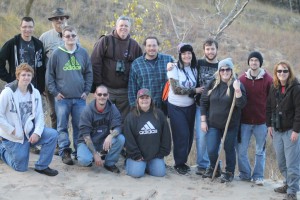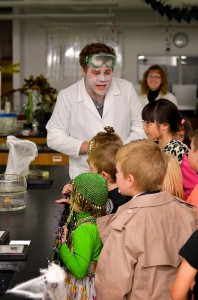Last Saturday, Professor Tony Rothering conducted the official spring bird count for campus. He documented 60 species including:
Canada Goose 8, Mallard 7, Double-crested Cormorant 21, Great Blue Heron 2, Green Heron 1, Turkey Vulture 1, Cooper’s Hawk 1, Least Sandpiper 5, Mourning Dove 4, Chimney Swift 7, Red-headed Woodpecker 3, Red-bellied Woodpecker 8, Downy Woodpecker 2, Eastern Wood-Pewee 1, Eastern Phoebe 1, Eastern Kingbird 11, Warbling Vireo 2, Red-eyed Vireo 3, Blue Jay 5, American Crow 17, Purple Martin 1, Tree Swallow 3, Barn Swallow 2, Cliff Swallow 10, Black-capped Chickadee 3, Tufted Titmouse 2, White-breasted Nuthatch 1, House Wren 3, Carolina Wren 2, Swainson’s Thrush 7, American Robin 30, Gray Catbird 12, Brown Thrasher 3, European Starling 15, Cedar Waxwing 7, Golden-winged Warbler 2, Tennessee Warbler 10, Nashville Warbler 1, Common Yellowthroat 1, American Redstart 1, Magnolia Warbler 1, Blackburnian Warbler 1, Yellow-rumped Warbler 3, Black-throated Green Warbler 2, Chipping Sparrow 5, Song Sparrow 8, Lincoln’s Sparrow 1, Swamp Sparrow 3, White-throated Sparrow 2, White-crowned Sparrow 10, Northern Cardinal 14, Rose-breasted Grosbeak 3, Indigo Bunting 2, Red-winged Blackbird 13, Common Grackle 40, Brown-headed Cowbird 4, Baltimore Oriole 6, House Finch 6, American Goldfinch 4, House Sparrow 3





